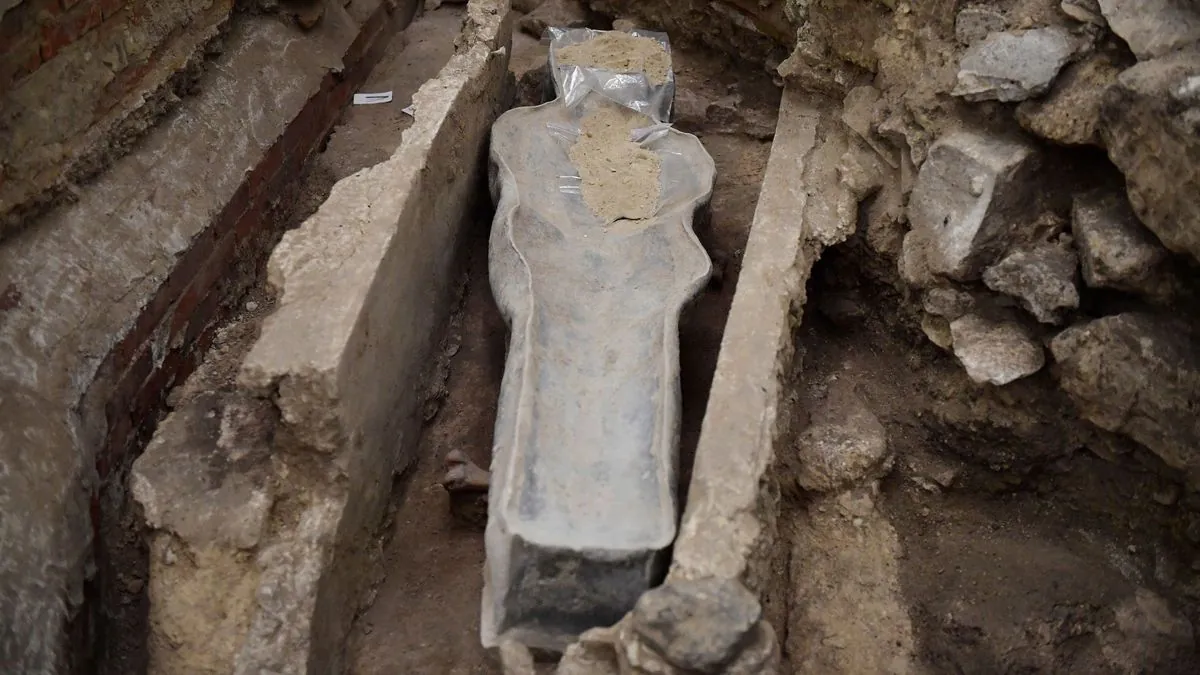In a significant archaeological breakthrough, researchers have likely identified the remains of Joachim du Bellay, a prominent French Renaissance poet, in one of two lead sarcophagi excavated from Notre Dame Cathedral in 2022. This discovery resolves a mystery that has persisted for over 450 years.
The excavation was part of the ongoing restoration efforts following the devastating fire that engulfed the cathedral on April 15, 2019. The blaze, which lasted approximately 15 hours, caused extensive damage to the iconic structure, necessitating a comprehensive rebuilding process.
Archaeologists from France's National Institute of Preventive Archaeological Research (Inrap) have been meticulously examining areas within and around the monument. Their work has yielded fascinating insights into the cathedral's history, which dates back to its construction between 1163 and 1245.
Among the numerous graves uncovered, two lead sarcophagi stood out due to their location in the cathedral's transept. One contained the remains of Antoine de la Porte, a canon who passed away in the early 18th century. The second coffin, however, presented a compelling enigma.
After careful analysis, researchers now believe the second sarcophagus contains the remains of Joachim du Bellay, a key figure in the French Renaissance. Du Bellay, who died in 1560 at the age of 37, was a member of La Pléiade, an influential group of 16th-century French poets. His most renowned work, "Les Regrets," a collection of sonnets, continues to be celebrated in French literature.
Several factors support this identification:
- The age of the deceased (30-40 years) aligns with du Bellay's known lifespan.
- Evidence of tuberculosis and meningitis in the remains corresponds with du Bellay's documented health issues.
- Signs of an autopsy on the body match historical records of a post-mortem examination performed on the poet.
The discovery of du Bellay's potential resting place is particularly significant given the poet's contributions to French culture. His defense of the French language as a medium for artistic expression became a rallying point for other Renaissance poets, reflecting the period's emphasis on national identity and cultural development.
Eric Crubézy, a professor at Paul Sabatier University involved in the identification process, highlighted the historical importance of the find: "With the political context of Joachim du Bellay, you can write the history of part of France and Italy at this moment."
The location of du Bellay's burial within Notre Dame has long been a subject of speculation. While it was known that his family had requested he be interred near his relative Jean du Bellay, a high-ranking clergyman, the exact site remained elusive until now.
Researchers propose two theories regarding the poet's unique burial location:
1. His remains may have been transferred to the transept in 1569, following the posthumous publication of his final works.
2. The site might have been intended as a temporary resting place, but the coffin was never relocated.
As Notre Dame Cathedral approaches its anticipated reopening in December 2024, this discovery adds another layer to its rich historical tapestry. The identification of du Bellay's remains not only solves a centuries-old mystery but also provides valuable insights into 16th-century French society, literature, and funerary practices.
"Du Bellay wrote seminal works of the French Renaissance era, but his career was short, spanning about nine years. Some of his last works were reflections of his deteriorating health."
This archaeological revelation underscores the importance of interdisciplinary collaboration in unraveling historical mysteries. As the restoration of Notre Dame continues, it serves as a poignant reminder of the cathedral's enduring role as a repository of French cultural heritage.
